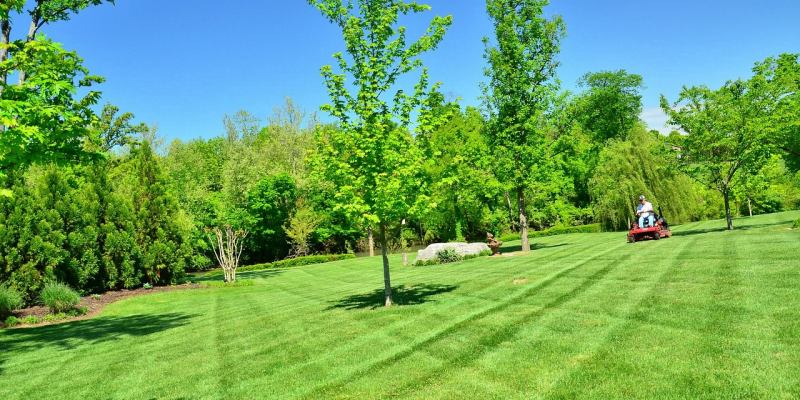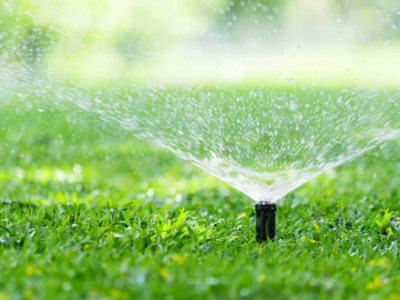Grass should just be able to grow without any help from the homeowner, right? Not exactly! The way a homeowner’s lawn looks says a lot about the curb appeal and maintenance of their home. And the more you work to keep your grass growing strong, the more resilient it becomes over time and you must know when to mow new grass as well.
It isn’t complicated, but it does take some consistency and maintenance to keep your lawn resilient and looking fresh and green year-round. Grass has a tendency to be finicky depending on the weather and nutrients in the soil. But, it is possible to create the lush and healthy grass you dream about.
It is important to know what type of grass is growing in your yard and it is helpful to create a lawn maintenance calendar to remind yourself of the different lawn updates you should be doing throughout the year. Creating a resilient lawn is manageable and attainable with these tips and helpful hints.
Fix the Problem Areas
Regardless of the level of care you have been able to give your lawn, it is likely that there are some patches of the lawn that are bare or struggling. It is helpful to fix those first before you invest time and money in the entire lawn so that you can work to maintain a seamless appearance for your grass.
The easiest and most cost-effective fix is to add new growth by spreading seeds to match the grass you already have. It is important to make sure the seeds you use are the same type of grass that is already growing in your lawn. Once you plant the seeds, make sure to water the area consistently and give the ground a good soaking so the seeds will be successful.
If you are just looking to fix a smaller area you can buy smaller strips of sod to match your grass that can help cover any holes you are trying to fix. Sod can get expensive over a larger area, which is why many landscape advisors recommend seeds for larger areas.
Maintain Maintenance

https://www.pexels.com/photo/blade-of-grass-depth-of-field-environment-garden-580900/
Grass is just like any other plant, it needs consistent care to thrive and survive. Even something as simple as mowing with even the best zero turn mowers can impact the strength of your grass. Did you know that you should alternate mowing patterns with either a 45 or 90-degree angle each time you mow to help maintain the soil and help the grass grow upright?
Summer lawns tend to be easier to maintain than in the winter simply because nature helps you out a lot during the summer with rainstorms and a more temperate climate. However, if your location goes through a dry spell it is worth a higher water bill to water the lawn while nature isn’t doing it.
It is also important to stay on top of pesky issues like moss or weeds. There are a lot of different lawn remedies out there depending on which problem you are trying to combat. And then of course there is yearly maintenance that needs to be done such as getting your yard ready for winter by raking leaves in the fall and winter.
Use Time to Your Advantage
As you learn more about creating a resilient lawn, you will start to notice that any research you do mentions timing depending on the type of lawn maintenance items that you are doing. Whether it is aerating your lawn, mowing the grass, or laying down seeds, the timing matters. It might be helpful to mark certain maintenance items on a calendar so you can take the guesswork out of what needs to happen and when.
Aerating your lawn is a helpful way to ensure that any fertilizer or weed killer you use has healthy soil to work with while it’s doing its job. But most people think you should aerate your lawn in the spring, but aerating in the fall is actually healthier for your lawn.
September is actually an ideal month to do so. September also tends to be the best month to start giving your lawn a little more care than you did over the summer because the weather and climate begin to change.
Most lawn maintenance companies recommend fertilizing and aerating your lawn in the fall to prepare it for winter. Depending on the size of your yard, you can aerate your lawn using a simple pitchfork tool. However, with larger yards, it may be beneficial to rent a spike aerator or hire a professional.
Leave the Clippings Behind
Most homeowners use a lawnmower that has a bag as they don’t like the look or feel of leaving the cut clippings in the yard. But did you know that using a bagged mower can actually impair the growth of your lawn? Leaving the clippings behind as you mow will help fertilize the soil naturally.
If you use a little chemistry background knowledge, you might remember that grass clippings have nitrogen in them which naturally fertilizes the lawn, saving you both time and money using this natural fertilizer. Moisture is also an important part of keeping your grass growing strong and leaving the clippings behind allows the still rooted grass to maintain moisture from the clippings.
A Rewarding Lush Yard

https://www.pexels.com/photo/garden-grass-meadow-green-589/
If you want to have yard envy from the neighbors, it takes work, but the good news is that the work is manageable and the reward of a lush yard is worth it. The best way to keep your grass going strong year-round is to stay consistent with maintenance.
Pulling weeds, watering often, nurturing the topsoil and cutting your lawn regularly (but in alternating directions!) are simple yet effective ways to maintain a healthy lawn. Even if you leave the clippings behind when you mow, it still helps to add fertilizer to give a boost of strength in the fall when you are already planning to aerate the soil.
A resilient lawn benefits both you and your neighbors adding curb appeal and an aesthetically pleasing look to the exterior of your home. Take the time to keep lawn maintenance consistent and both you and your neighbors will be proud of your well-maintained lawn.










Comments